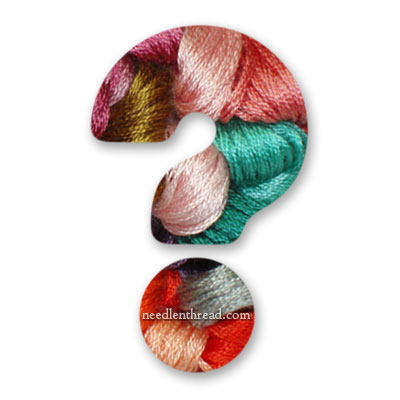October 6, 2010
Stitch Sampler – Book Give-Away!
The other day, I reviewed the book Stitch Sampler, and today, I thought I’d give away a copy.
Read on to see the give-away rules!
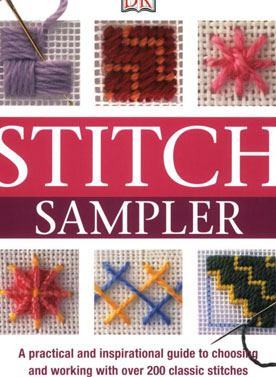
October 6, 2010
The other day, I reviewed the book Stitch Sampler, and today, I thought I’d give away a copy.
Read on to see the give-away rules!

October 5, 2010
Last week, we discussed different stitches that can be used for filling larger spaces. I brought the subject up because lots of folks ask whether or not they should fill this particular (large) space with satin stitch, and I wanted to emphasize that satin stitch is really not an ideal stitch for covering a large space, unless the satin stitch is somehow couched or held down by other stitches.
The difficulty is the notion of “large,” I think. After all, there’s large, and then there’s Large. It’s pretty obvious that I’m not talking about Large, as in table-cloth size or something of that nature. The term large being rather relative, let’s take a look at a small design that’s actually “large” and that just didn’t work with satin stitch.
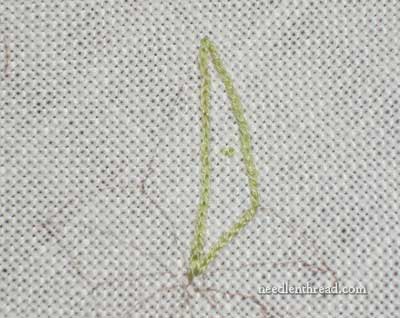
October 4, 2010
Running out of thread when there’s only four more stitches to go is one of the Absolutes in the Life of the Stitcher.
It’s also one of those wonderful little aggravating trials that makes people of a certain personality (take me, for instance!) want to swear (under my breath, of course…). It’s a Riffemrackemfrickemfrackem Moment!
I’ve been working up instructions for doing the chain stitch and some of its variations, and while I was chain-stitching along, It happened. I ran out of thread with just over an inch left to stitch.
Aha! A perfect teaching opportunity, because you know what? It will probably happen to you some day, too, if it hasn’t happened already. As my Dad would say, “It’s a has or it’s a gonna.” One day, you’ll be chain-stitching along, and bammo! You’ll have about an inch of thread left and four more stitches to go. Instead of cursing under your breath, though, you’ll remember that switching threads is not so difficult as all that and that it’s even – yes – fun.
(Ok, fine. I admit this might be a stretch. It would be easier not to have to change the thread. But we’re trying to be optimistic here!)
So here’s a little photo tutorial on how to change threads when chain stitching. First we’ll talk about the technically INcorrect way to change the thread, then I’ll show you the technically correct way to change the thread, and then… I’ll admit that you don’t always have to be technically correct.

October 3, 2010
Here’s a stitch dictionary that I’ve had on my shelf for ages. For some reason, I pulled it out the other day, and golly, I’m glad I did! Now I remember why I bought it. It’s a great little stitch dictionary – simple, uncomplicated, colorful, informative… and fairly inexpensive. The book is called Stitch Sampler by Lucinda Ganderton, and published by DK Publishing. There are lots of things I like about the book, and maybe a few drawbacks, but overall, a handy little visual reference for stitching.
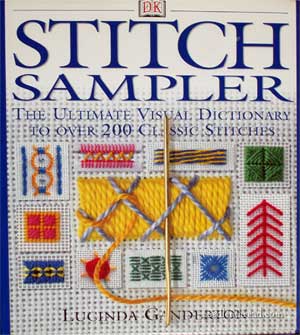
October 1, 2010
Being a fan of Renaissance Art and certain Renaissance artists, I was really excited when a reader sent me a link to the Guardian’s little blurb on the exhibit at the Victoria & Albert in London, featuring Raphael’s Sistine Chapel Tapestries and the paintings from which they were woven.
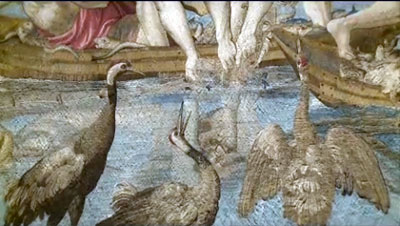
September 30, 2010
Last week, I posted the first collection of Grace Christie’s little designs for exploring hand embroidery stitches, and now, here’s the second set. These little designs come from Samplers and Stitches by Grace Christie, a very nice embroidery book that’s available online for free.
In the book, the various stitches that Mrs. Christie explores are shown in diagram form, partially worked on lots of different little motifs. To make the motifs workable for a sampler (or anything else you can think of to use them for!), I redrew them as vector images and, for ease of printing, have collected them into several PDF files.
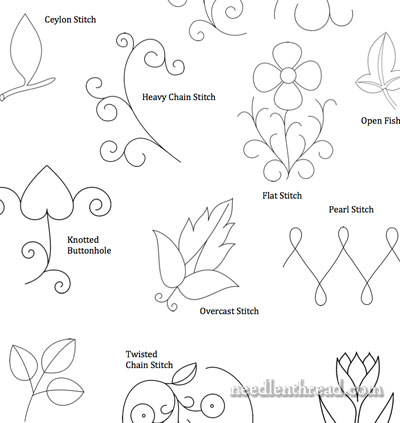
September 29, 2010
Last week, we looked at the Most Frequently Asked Question that I’ve received on Needle ‘n Thread: How to Transfer an Embroidery Design. This week, let’s take a look at another question that pops up quite often, regarding filling large areas (including backgrounds) with embroidery, especially in a solid color.
